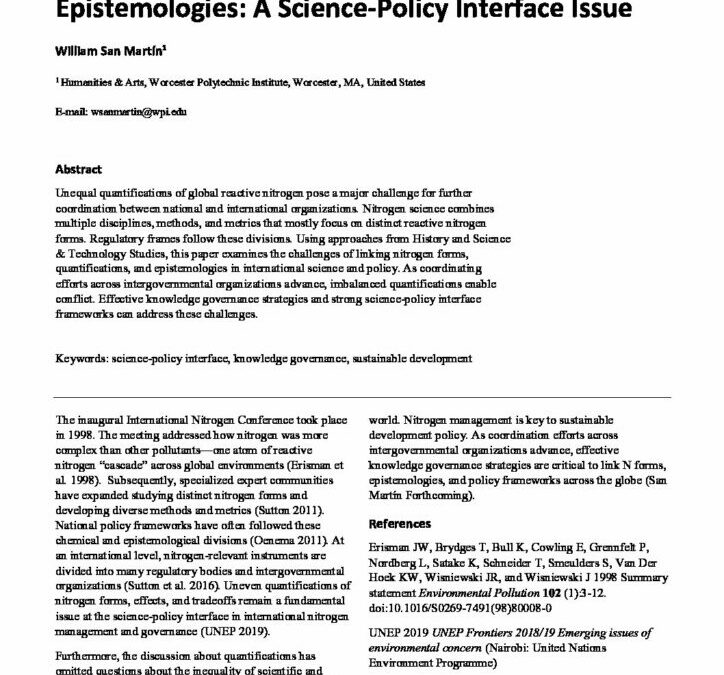Linking Nitrogen Forms, Quantifications, and Epistemologies: A Science-Policy Interface Issue

Unequal quantifications of global reactive nitrogen pose a major challenge for further coordination between national and international organizations. Nitrogen science combines multiple disciplines, methods, and metrics that mostly focus on distinct reactive nitrogen forms. Regulatory frames follow these divisions. Using approaches from History and Science & Technology Studies, this paper examines the challenges of linking nitrogen forms, quantifications, and epistemologies in international science and policy. As coordinating efforts across intergovernmental organizations advance, imbalanced quantifications enable conflict. Effective knowledge governance strategies and strong science-policy interface frameworks can address these challenges.
The inaugural International Nitrogen Conference took place in 1998. The meeting addressed how nitrogen was more complex than other pollutants—one atom of reactive nitrogen “cascade” across global environments (Erisman et al. 1998). Subsequently, specialized expert communities have expanded studying distinct nitrogen forms and developing diverse methods and metrics (Sutton 2011). National policy frameworks have often followed these chemical and epistemological divisions (Oenema 2011). At an international level, nitrogen-relevant instruments are divided into many regulatory bodies and intergovernmental organizations (Sutton et al. 2016). Uneven quantifications of nitrogen forms, effects, and tradeoffs remain a fundamental issue at the science-policy interface in international nitrogen management and governance (UNEP 2019).
